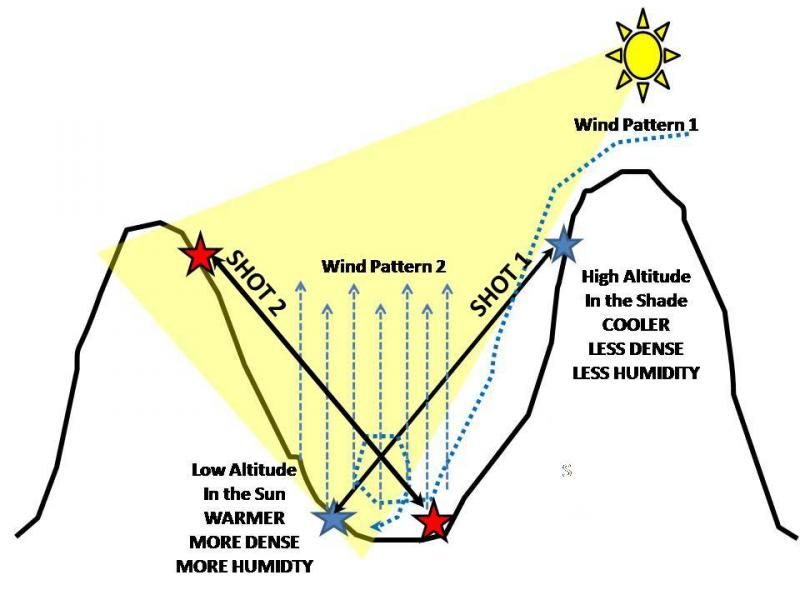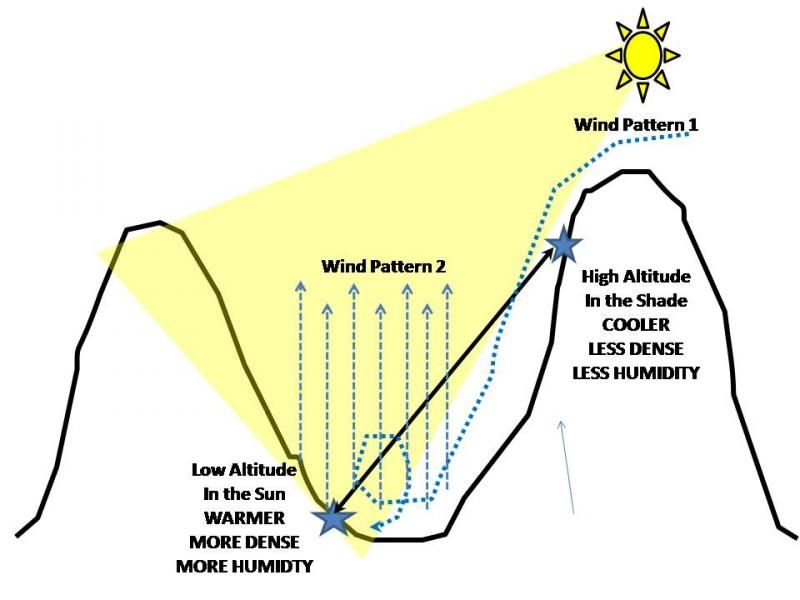Sorry, once again, not trying to muddy the waters,
The OP's questions in regards to angle shooting was a "Distance / Gravity / Time of Flight" based question, and that is the primary foundation/fundamental of angle shooting.
Per many excellent responses above, that aspect and how it can be dealt with are all well explained.
That being the case, I have seen more shots missed in the "real world of angle shooting" because of other environmental factors which I also tried to cover.
External Ballistics covers a broad range of variables, and the bottom line is you can't afford to ignore any single component. Where I frequently see newer shooters struggling is when they make the transition from a "square flat range" into the "real world" and they find themselves dealing with variables that they had never previously dealt with (like angle & cosines), or are having to deal with variables in a different manner (like multiple wind speeds & directions or varying atmospheric conditions).

Looking at Shot 1 & Shot 2 above, they could both be the exact same shot in terms of Distance & Angle, however if the conditions are significantly different and it is a long range shot, you would need two different sets of corrections in order to make the shot because of the different environmental conditions involved in each shot.
Many shooters are familiar with compensating for different environmental conditions, for example starting off shooting early in the morning (cool/thin/dry) versus shooting later in the afternoon (hot/dense/humid). What many shooters will not recognize, is that you can have both of these conditions at the same time in an angle shooting scenario due to the changes in altitude and the impacts of the topography.
Making a first round hit in the situations above can obviously be very challenging because determining all of the conditions along the bullet's flight path can be almost impossible. The key is when the first round goes long or comes up short, that you can figure out what component of External Ballistics is making that happen? If all you focus on is Angle & Corrected Distance, then you may well be missing the real cause like a wind conditions running up the face of the slope causing lift or a drastic change in other environmental conditions.
If you can rapid fire your shots and call your misses, you can always just correct off of your previous shot. However if you need a first round hit, or you can't call your misses, then being able to read the variables and adjusting as needed becomes critical. Also knowing what variables to watch/consider for changes between your shots can also be critical.
Apologies again for the sidetrack, hopefully there was some benefit to it, and it didn't just derail the topic.





